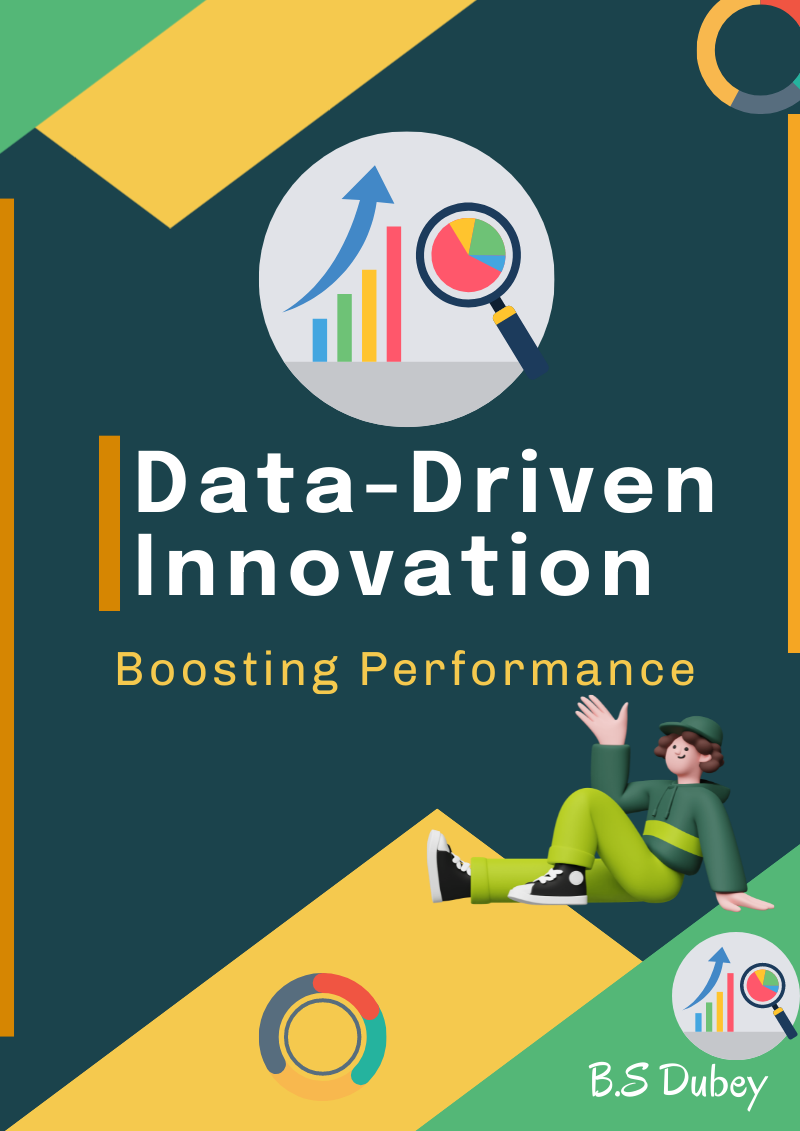Data-Driven Innovation:
Data-Driven Innovation: Boosting Performance
Introduction In the modern business landscape, data has become a crucial asset for organizations looking to gain a competitive edge. This infographic explores the concept of data-driven innovation, focusing on how data can be harnessed to boost performance and drive growth. The introduction emphasizes the transformative potential of data when used effectively to inform decision-making and optimize processes.
Data-Driven Culture Creating a data-driven culture is essential for organizations aiming to leverage data effectively. This section outlines the key components of a data-driven culture, including:
- Data Literacy: Ensuring that all employees have a basic understanding of data and its applications.
- Open Data Sharing: Promoting transparency and accessibility of data across departments.
- Data-Driven Decision-Making: Encouraging decisions based on data analysis rather than intuition or assumptions.
Data Analysis & Insights Data analysis is a critical step in extracting actionable insights from raw data. This section explains how organizations can use advanced analytics techniques to uncover trends, patterns, and opportunities. Key points include:
- Predictive Analytics: Using historical data to forecast future trends and behaviors.
- Real-Time Analytics: Analyzing data as it is collected to make immediate decisions.
- Data Visualization: Presenting data in visual formats to make insights more accessible and understandable.
Implementation & Action Turning insights into action is where the real value of data-driven innovation is realized. This section provides a framework for implementing data-driven strategies, including:
- Setting Clear Objectives: Defining specific goals that data initiatives aim to achieve.
- Actionable Insights: Translating data insights into practical actions that drive business outcomes.
- Risk Management: Identifying potential risks and developing strategies to mitigate them.
Measuring Success Evaluating the impact of data-driven initiatives is crucial for understanding their effectiveness. This section highlights the importance of tracking key performance indicators (KPIs) and metrics to measure success. It discusses:
- Performance Metrics: Identifying relevant metrics that align with organizational goals.
- Continuous Improvement: Using data insights to refine strategies and optimize performance over time.
Conclusion The infographic concludes with a summary that emphasizes the importance of adopting a data-driven approach in today’s competitive environment. It encourages organizations to invest in data analytics capabilities, foster a data-centric culture, and continuously seek ways to innovate through data. By doing so, organizations can unlock new opportunities, improve efficiency, and achieve sustained growth.


